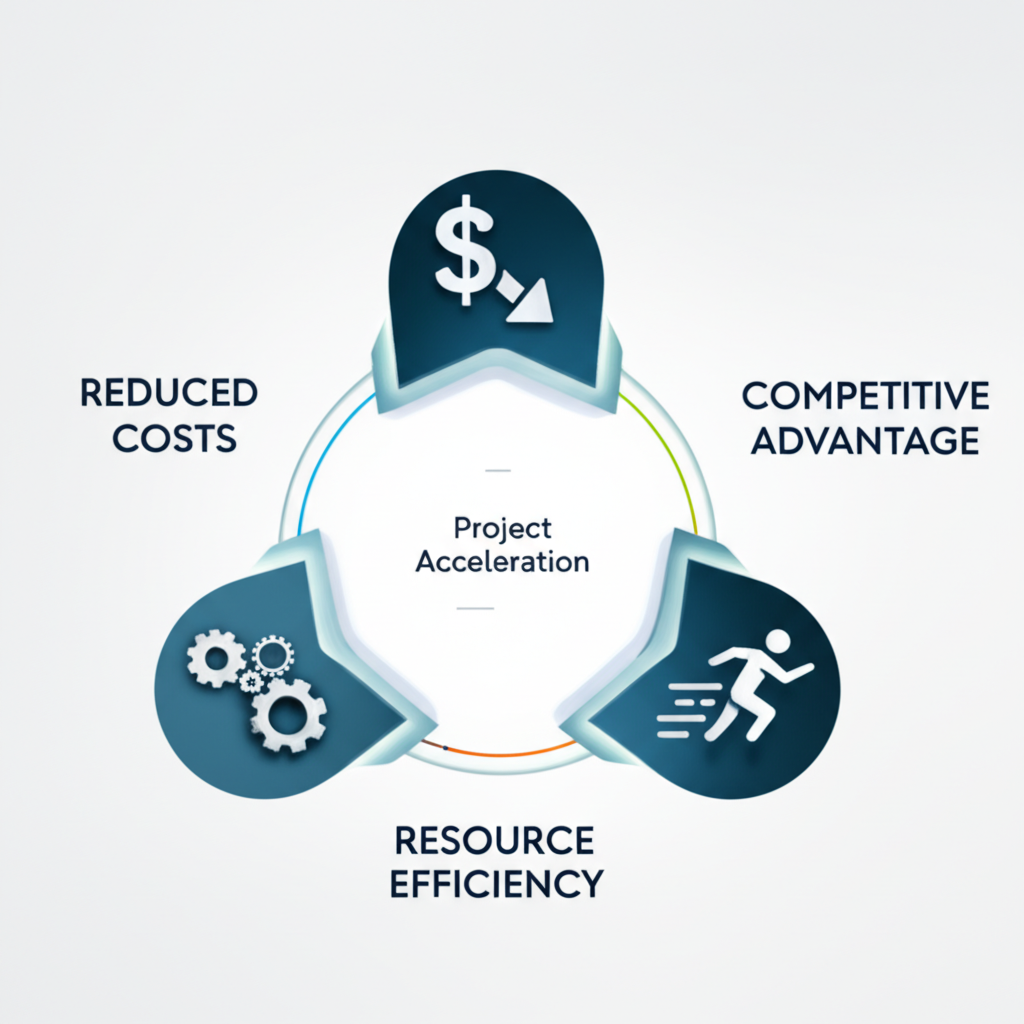Unlock Faster Project Timelines With Rapid Quoting

TL;DR
Rapid response quoting accelerates project timelines by significantly shortening the initial planning and approval stages. This initial speed creates momentum, setting a positive tone for efficient production and delivery. Ultimately, this strategy is key to reducing overall project lead times, completing more projects with existing resources, and securing a significant competitive advantage in the market.
Defining Rapid Response Quoting and Its Impact
Rapid response quoting is a strategic approach in project management and manufacturing focused on drastically reducing the time between a client's request for a quote and their receipt of a detailed, actionable proposal. Instead of a process that takes weeks, rapid quoting often condenses this timeline to days or even hours. This is achieved through streamlined internal processes, dedicated teams, and advanced software that allows clients to directly upload project files and specifications, ensuring all necessary information is captured upfront.
The primary impact of this speed is felt at the very beginning of the project lifecycle. As noted by fabrication specialists, shortening the initial planning time is the first step in getting a project to the shop floor as quickly as possible. By providing swift and accurate quotes, companies demonstrate a commitment to efficiency and client time, which builds trust and allows critical work to begin much sooner. This initial velocity removes early-stage bottlenecks that can otherwise stall a project before it even begins, such as waiting for approvals or material procurement.
This early momentum has a cascading effect on the entire project timeline. A fast, efficient quoting process sets a precedent for the rest of the project, fostering a culture of agility and responsiveness. When the front-end is compressed, subsequent phases like design, fabrication, and delivery can be initiated faster. This not only accelerates the project but also enhances the customer experience, proving that the company is capable of executing effectively under tight deadlines and adapting to changing requirements with agility.

The Strategic Benefits of Accelerating Project Timelines
Accelerating project timelines through methods like rapid quoting delivers far more than just speed; it unlocks significant strategic advantages that can redefine a company's market position. The ability to complete projects faster directly translates into a powerful competitive edge, allowing businesses to bring products and services to market sooner and capitalize on emerging opportunities before rivals can react. This is especially critical in fast-paced industries where being first can capture significant market share.
Beyond market positioning, faster project turnarounds yield substantial financial and operational benefits. According to insights from the Project Management Institute, shortening project lead times enables companies to deliver more projects with the same resources, effectively increasing capacity without adding overhead. This enhanced efficiency leads to several key advantages:
- Reduced Costs: Longer projects accumulate higher costs related to labor, resource allocation, and operational overhead. By compressing the timeline, businesses can significantly minimize these expenses.
- Enhanced Resource Efficiency: Faster cycles mean that teams and equipment are freed up sooner to begin the next project, maximizing the productivity of existing assets.
- Improved Cash Flow: Completing projects and delivering them to clients sooner accelerates revenue collection, which positively impacts the company's financial health.
- Stronger Market Presence: Consistently delivering projects on or ahead of schedule builds a reputation for reliability and efficiency, attracting more clients and strengthening brand loyalty.
For industries that rely on complex supply chains and manufacturing, partnering with suppliers who can support accelerated timelines is crucial. For instance, companies in the automotive sector that require high-quality components benefit from partners that offer rapid prototyping and efficient mass production. For robust and reliable automotive components, organizations can explore the custom hot forging services from Shaoyi Metal Technology, which specializes in IATF16949 certified parts and offers in-house die manufacturing to ensure precision and timely global delivery.
Key Methodologies for Project Acceleration
While rapid quoting provides an initial boost, project managers employ several established methodologies to compress schedules throughout the project lifecycle. The two most prominent techniques are fast-tracking and crashing. Understanding their differences, applications, and trade-offs is essential for any team looking to accelerate delivery without derailing the project.
Fast-Tracking
Fast-tracking is a schedule compression technique that involves performing tasks or project phases in parallel that were originally planned to be executed sequentially. For example, instead of waiting for the design phase to be 100% complete before starting procurement, a team might begin ordering long-lead time materials once the initial design specifications are approved. This method is most effective when the overlapping tasks do not have hard dependencies, meaning one does not strictly require the output of the other to begin. As detailed by Atlassian, fast-tracking is a cost-efficient way to shorten timelines because it primarily rearranges the schedule using existing resources rather than adding new ones.
Crashing
Crashing, on the other hand, involves adding additional resources to critical path activities to reduce their duration. This could mean authorizing overtime for the project team, hiring more staff, or bringing in specialized equipment to complete a task faster. Unlike fast-tracking, crashing almost always increases project costs. It is typically reserved for situations where the deadline is critical and the additional expense is justified by the need to avoid even costlier delays.
Choosing between these methods depends on the project's specific constraints, including budget, risk tolerance, and the nature of the tasks on the critical path. Here is a comparison to help guide the decision:
| Aspect | Fast-Tracking | Crashing |
|---|---|---|
| Primary Method | Overlapping sequential tasks | Adding more resources |
| Cost Impact | Minimal to no additional cost | Always increases direct costs |
| Risk Impact | Increases risk of rework and communication challenges | Can increase risks related to resource burnout and coordination |
| Best For | Projects where activities can be safely overlapped | Time-critical projects where budget is flexible |
Managing the Risks of Fast-Tracking and Acceleration
While accelerating project timelines offers clear benefits, these strategies are not without significant risks. Pushing for speed can introduce new challenges that, if left unmanaged, can undermine the very goals of the project. Acknowledging and proactively mitigating these risks is a hallmark of effective project management and is crucial for ensuring that speed does not come at the expense of quality or budget.
One of the most significant risks associated with fast-tracking is an increased likelihood of errors and rework. When tasks that were meant to be sequential are performed in parallel, the chance for miscommunication and misalignment grows. For example, if the construction team begins work based on a preliminary design that later changes, significant rework may be required, consuming both time and resources. To mitigate this, project managers must establish robust communication channels and frequent check-ins to ensure all team members are working with the most current information. A detailed project plan that clearly identifies dependencies is also essential.
Resource overallocation is another common pitfall. Asking team members to juggle multiple tasks simultaneously can lead to burnout, decreased productivity, and a drop in work quality. Effective resource management is key to preventing this. Project managers should use tools to visualize workloads and ensure that no single team member is stretched too thin. Prioritizing tasks based on their impact on the critical path can also help focus efforts where they are most needed, preventing teams from becoming overwhelmed by competing demands.
Finally, there is the risk of compromising quality. Under pressure to meet tight deadlines, teams may be tempted to cut corners or skip essential quality control checks. This can lead to a final deliverable that fails to meet client expectations or regulatory standards. To avoid this, quality assurance must remain a non-negotiable part of the project plan. Building in specific quality gates and review processes, even within an accelerated schedule, ensures that standards are maintained throughout the project lifecycle.
Frequently Asked Questions
1. How to accelerate project execution?
Project execution can be accelerated using several techniques. The most common methods include fast-tracking, where tasks are performed in parallel instead of sequentially, and crashing, which involves adding more resources to critical tasks. Other strategies include optimizing resource allocation, reducing the project scope where possible, and improving communication and workflow efficiency to minimize delays.
2. What increases when you fast track a project?
When you fast-track a project, the level of risk significantly increases. This includes a higher risk of errors, miscommunication, and the need for rework, as teams are working on tasks simultaneously without the benefit of completed preceding stages. The complexity of coordination and dependency management also increases, requiring more intensive project management oversight.
3. How does the fast tracking method work to expedite project completion?
The fast-tracking method works by identifying activities on the project's critical path that were originally scheduled to be done one after another and rearranging them to be done at the same time. By overlapping these tasks, the total time required to complete the project is reduced. This method does not add resources but instead reschedules the work to make the timeline more aggressive.
4. What are the advantages of fast tracking in project management?
The primary advantages of fast-tracking are accelerated project completion and cost efficiency. It allows teams to meet tight deadlines without the additional expense of hiring more staff or paying for overtime, as it relies on optimizing the schedule with existing resources. This can provide a significant competitive advantage by enabling a faster time-to-market for products or services.
 Small batches, high standards. Our rapid prototyping service makes validation faster and easier —
Small batches, high standards. Our rapid prototyping service makes validation faster and easier — 
